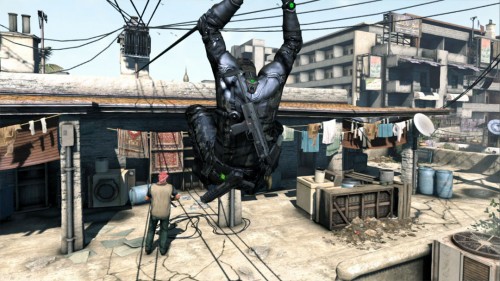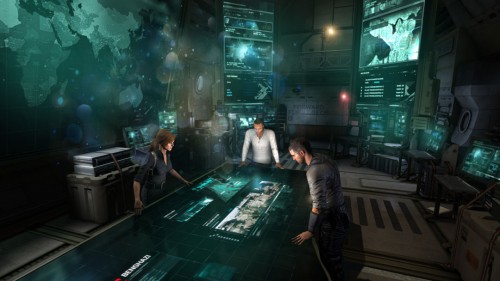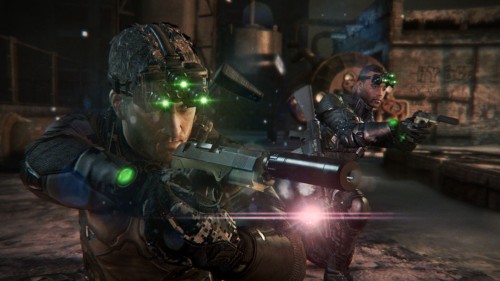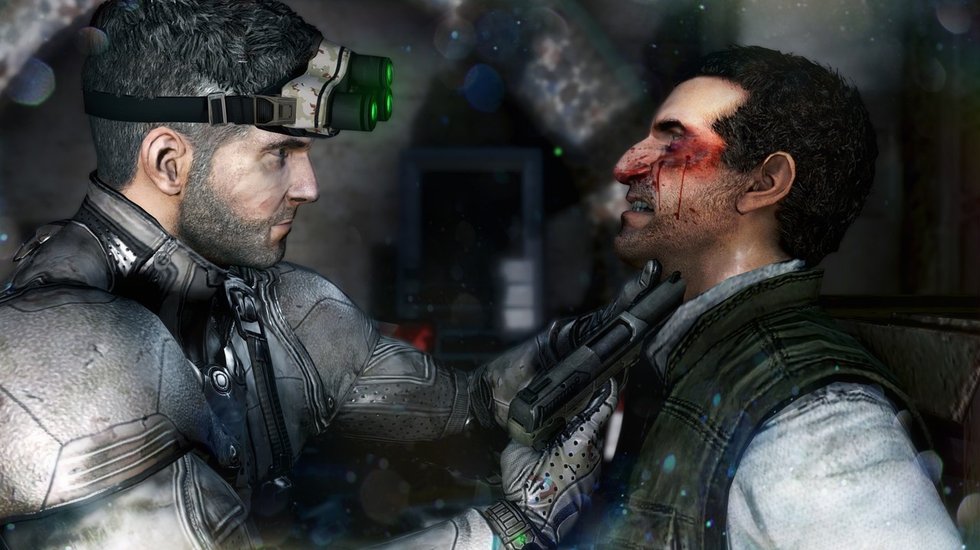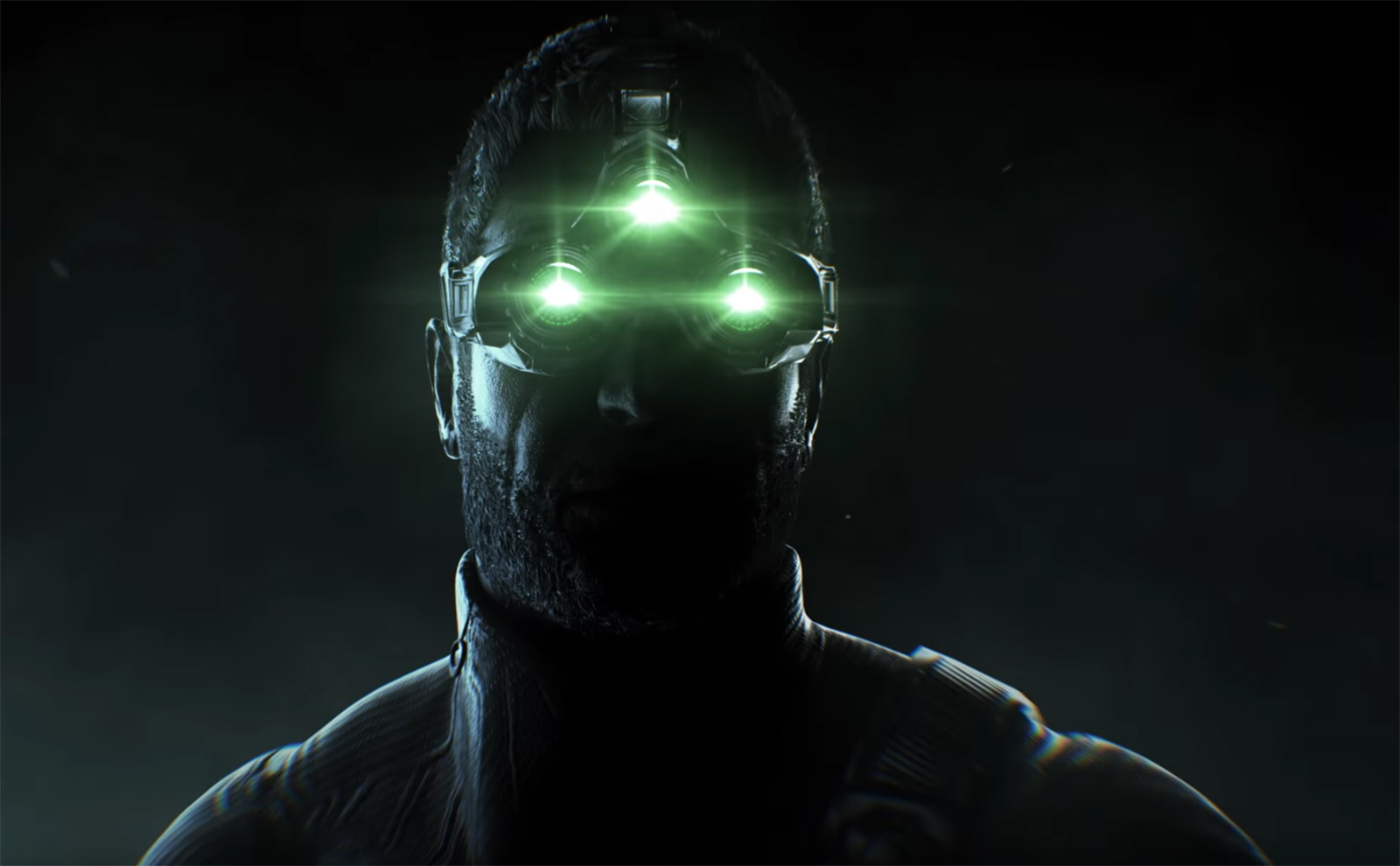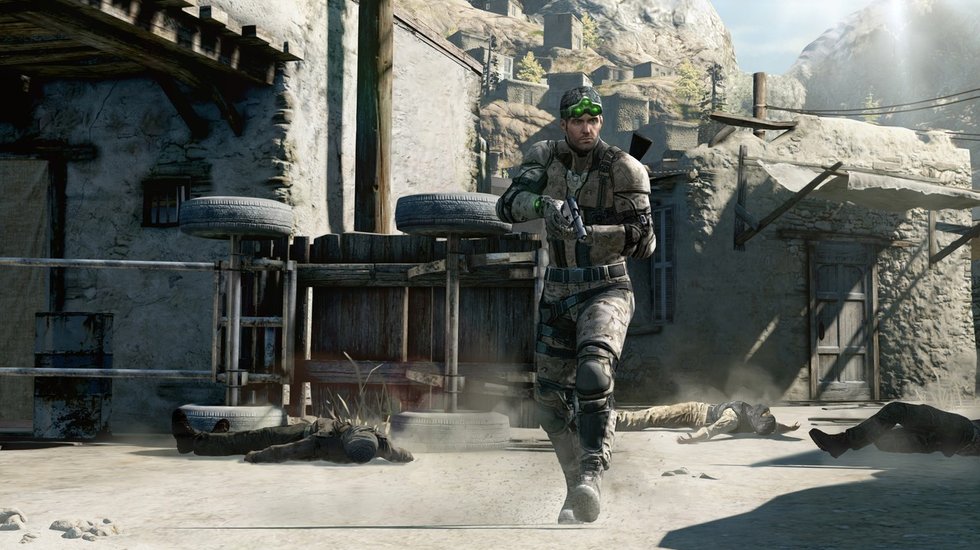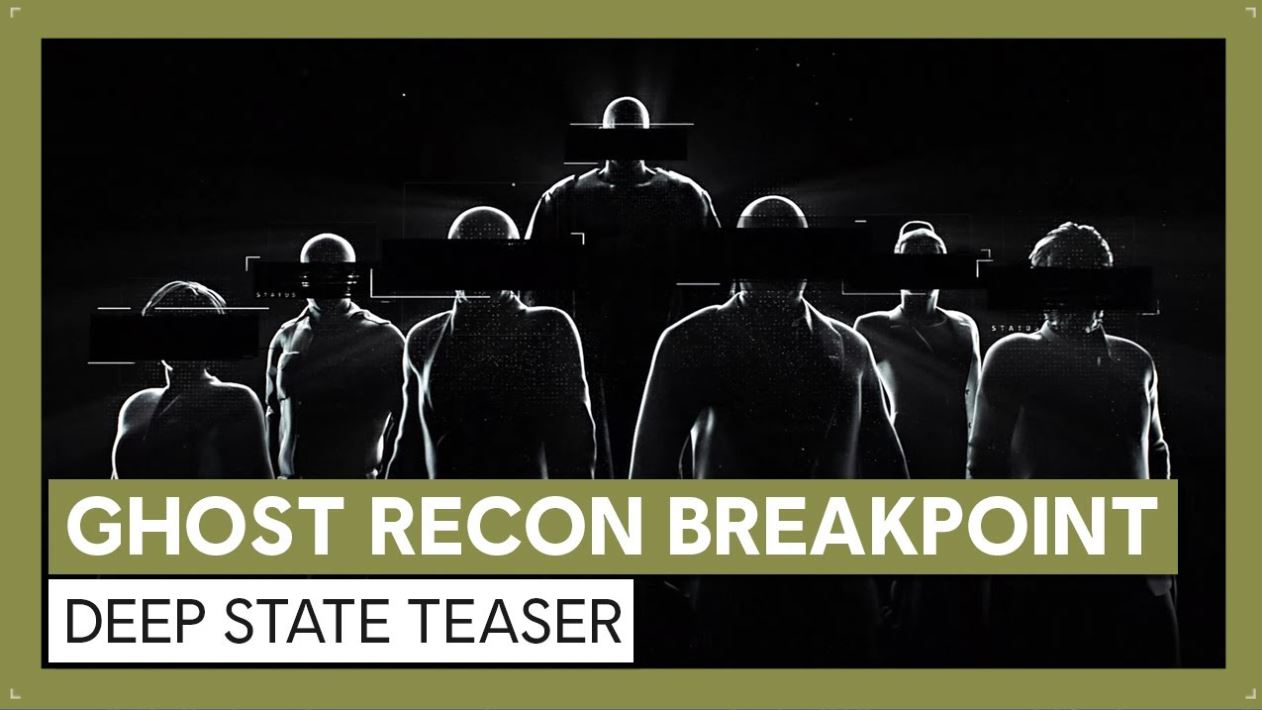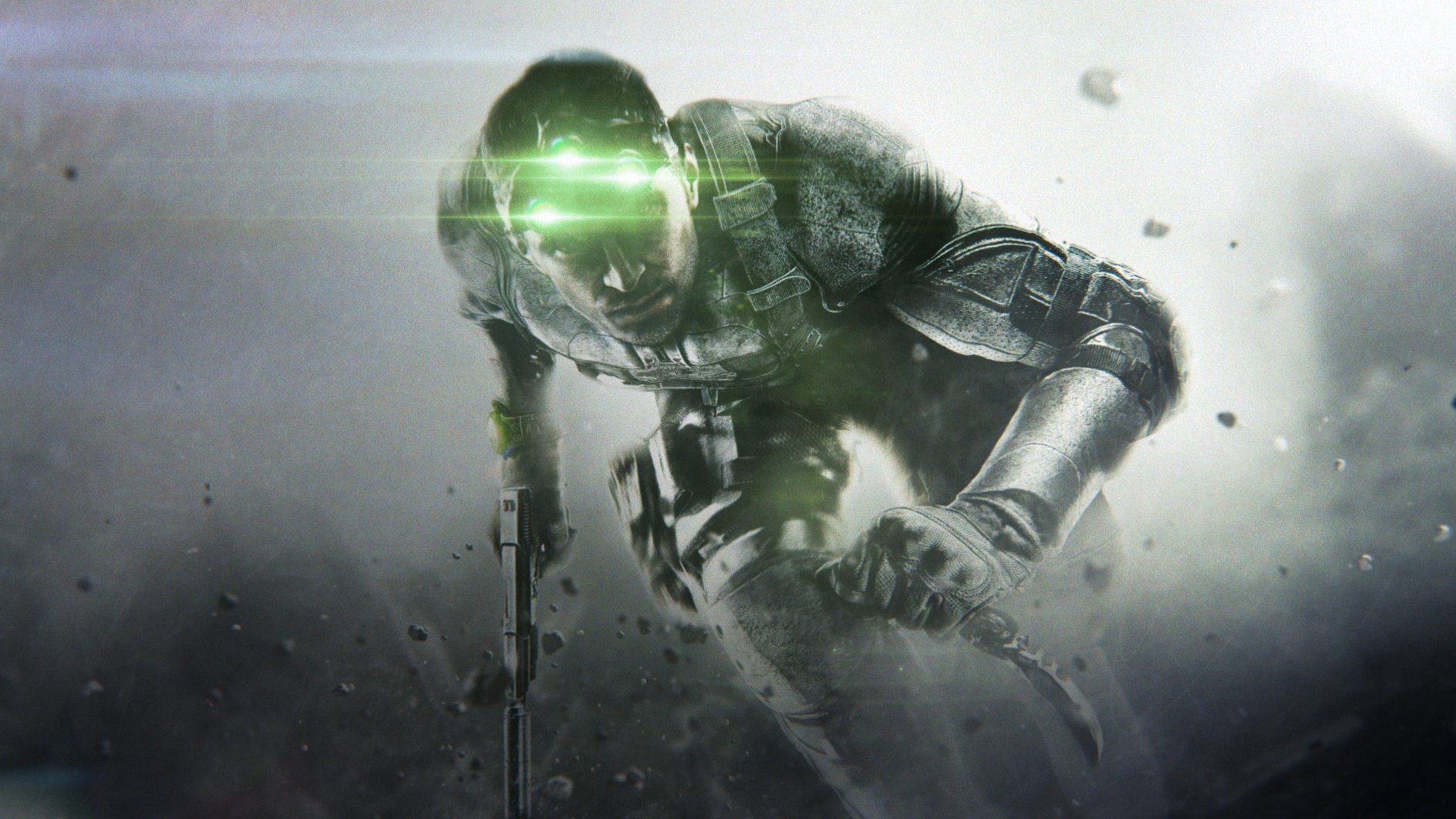
Splinter Cell Blacklist chronicles the latest adventures of stealth master Sam Fisher as he returns to the secret government payroll, dishing out justice from the shadows. At the closing stage of the current generation, Ubisoft’s brand new Toronto studio deliver their first AAA game with solid results. On Xbox 360, PlayStation 3, WiiU and PC, Splinter Cell Blacklist walks a fine line between action and stealth, but does well to appease diehard fans soured by Conviction.
Blacklist possess the top-notch presentation you would expect from a big-name Ubisoft brand, and the team at Toronto have not missed a step in sound and visual design. Sure, the game isn’t on the cutting edge of graphical technology, but the attention to detail is more than adequate, and the PC visuals are nevertheless very handsome. Lighting, animations and modelling pass the benchmark, ensuring the player is always aware of their concealment in the shadows. Thankfully, the black-and-white ”no one can see you” experiment from Conviction has been dumped.
The sound effects and score cannot be faulted, but the only factor adding a downer is the vocal performance of Sam Fisher’s new voice actor, Eric Johnson. Replacing the iconic Michael Ironside was always going to be challenge, with his gruff voice becoming all but synonymous with the character. Johnson accomplishes what may be described as an “adequate'” job, but his monotone and younger-sounding voice feel removed from Sam Fisher’s well-established character.
Blacklist‘s story follows the standard Clancy fare – terrorists threatening global destruction. A mysterious group calling “The Engineers” demand the United States recall all of its overseas troops, of face increasing attacks. Sam is deployed to stop the terrorists, and the tension gradually builds as conspiracies are unravelled. The supporting cast is an assortment of interesting personalities that rate above the usual archetypes. The bad guys show a flash more personality than you might expect, and overall, the plot gels together solidly, giving Sam reason to wreak havoc – albeit silently – all over again.
What will have all Splinter Cell fans swooning is the reinvigoration of silent, stealth-based gameplay. The masterful Chaos Theory is generally regarded as the series’ high point, with things slowing diluted since. Blacklist still caters for new players nevertheless, with what it trumpets as three signature gameplay styles – ghost, panther and assault. In a nutshell, you can complete the game in one or a mix of three ways; silently, without the enemy ever seeing you (the “ghost”), silently eliminating and stalking enemies from the shadows (the “panther”), or all guns blazing (“assault”). All the noise Ubisoft has made about this player choice is justified, as it really works in practice.
Ubisoft have designed the levels like small sandboxes, each conducive to any of the three gameplay styles. Sam can sneak over a wall, climb up a pipe or shimmy along a ledge, eschewing the notion of linearity. Players genuinely have multiple ways of reaching the objectives, and if you become stuck with one route, there are always several more. Again, it largely boils down to player choice. Purists will enjoy adopting the ghost approach of Chaos Theory, and while it can be challenging, the game can mostly be completed without ever being seen or interfering with the enemy AI.
An armoury of classic and new gadgets such the portable tri-rotor drone handily augment sneaking, allowing players to conduct surveillance and bypass patrols. Enemies are programmed with the requisite level of alertness, and the perfect stealth mission can quickly go awry. If anything, Blacklist can sometimes be rather unforgiving if you make the smallest mistake, and a lack of checkpoints can make replaying sizable chucks very tiresome. The mark-and-execute feature from Conviction also returns, but thankfully, the developers only force it upon you sparely.
Sam’s home base, a military aeroplane known as the Paladin, serves as hub for the game, much like the Normandy in Mass Effect. Sam can upgrade or purchase armour, gadgets and weapons between missions. An economy system rewards players with points for finishing missions in line with one of the three gameplay styles, or for completing challenges, such as silently knocking out a requisite number of enemies. These points are used to fund your armoury, or to upgrade the Paladin, which in turn serves to give Sam better logistical support, such as a radar for tracking enemies. The detailed customisation feeds into the importance placed of player choice, as Sam can be kitted out in way that best serves your preferred gameplay approach. For example, Ghost aficionados like myself will only opt for non-lethal gadgets, stealthy armour and silenced weapons.
Cleverly, the Paladin also serves as your entire port into the game. From here, you can launch any of the solo missions, co-op or multiplayer and track your statistics. Initiating conversations with the team, including the ever indispensible Anna Grimsdottir, allows you to complete standalone side-missions. These side jobs, which are just as detailed and numerous as the single-player levels, may also be completed with Sam’s co-op partner Briggs. These missions are designed to a degree with two players in mind, but they never feel like dual input is as vital as it was in Conviction’s excellent co-op mode. Playing with a friend is certainly easier, but a solo run is entirely possible, except on a few occasions. Completing everything in Blacklist will eat up well over 15 hours, and afterwards, diehards can ramp up the difficulty to Perfectionist. This mode removes several features, such as sonar tracking, ensuring the most pure Splinter Cell stealth experience.
The highly sought-after Spies vs Mercs returns in Blacklist, rounding out an already excellent package. The multiplayer mode sees spies, playing from third-person in the frame of Sam Fisher, outwitting heavy armed Mercs in first-person view. The original 2 versus 2 and a new 4 against 4 mode play differently, but equally as entertaining. With only two players on each side, communication and team-work are vital, making for a slower pace. The larger matches with eight players are much faster, with more of a team deathmatch style of play, as each side scrambles to secure the objective.
Multiplayer retains the intense atmosphere from previous versions. Embodying a Merc makes you feel vulnerable, despite your small armoury. The satisfaction of gunning down a spy can be quickly sullied as their partner deals you a quick death from behind. When a round finishes, each team switch roles, giving a sense of balance, and importantly, the opportunity for revenge. Two new modes, Team Deathmatch and Uplink, mix spies and mercs together on the same side. I wasn’t swayed by these new offerings, however, as the distinction between who is who can be rather confusing.
Blacklist may not feature the Sam we know, but it delivers on the classic stealth gameplay the series is known for. New developers Ubisoft Toronto have admirably created a game with solid production values, while also steering the franchise back on course. Veterans will enjoy the thrill of returning to the shadows, while fantastic level design allows new players can find their way. The return of Spies vs. Mercs is the icing on the cake, ensuring months of multiplayer entertainment. At last, Blacklist is again the stealth game that Splinter Cell fans have been demanding.
Level design | Classic stealth gameplay | Abundance of Content | Spies vs. Mercs
Lack of checkpoints | No Michael Ironside

